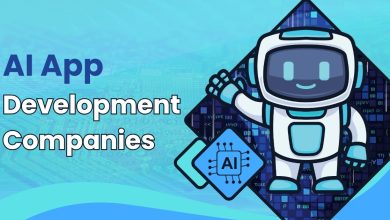
Every marketer is being told the same thing: use Generative AI to create your customer personas. Just type a prompt like, “Give me a persona for a first-time homebuyer,” and within seconds, you have “Sarah, a 32-year-old graphic designer who loves hiking and artisanal coffee.” It feels like magic. It feels like progress.
But it’s a dangerous illusion. As a marketer who has spent the last eight years in the AI space, I am adamant that this common workflow is not just flawed; it is actively harming your business. The hard truth is that the AI-generated persona you just created is a statistically invalid hallucination, a plausible fiction that is about to cost you a fortune in wasted ad spend.
The core problem is that most general-purpose Large Language Models (LLMs) are not designed for market research. They are designed to generate text that is plausible and coherent based on the vast patterns they’ve learned from the internet. When you ask for a persona, the AI isn’t analyzing a real dataset of homebuyers. It’s creating a fictional character based on the internet’s collective, often stereotyped, idea of what a 32-year-old graphic designer is like. It’s a creative writing exercise, not a data-driven insight.
This leads to marketing strategies built on a foundation of sand. You build your messaging around “Sarah’s” love for hiking, only to find that your real customers are busy parents who value school districts over trailheads. You target ads based on her presumed income, but your actual buyers have a completely different economic profile. The persona feels real, but it doesn’t represent a statistically significant segment of your actual market. It’s a mirage that will lead your marketing budget straight off a cliff.
So, how do we fix this? The solution is to flip the workflow on its head. Instead of asking AI to invent our customers, we must use it to discover them in real-world data.
The future of persona generation is not about better prompts; it’s about better data. The framework is simple: ground your AI in a verifiable, foundational dataset first. For a business operating in the United States, the most powerful and underutilized dataset is the public data from the U.S. Census and the American Community Survey (ACS). This is the ground truth about the American population.
A responsible and effective AI workflow for persona generation looks like this:
Start with a Data Query, Not a Creative Prompt.
Instead of asking the AI to imagine a customer, ask a question of the real data. A coffee brand shouldn’t ask for “a persona for a coffee drinker.” They should ask, “Which zip codes have the highest concentration of residents aged 25-40 with a household income over $100,000?”
Let the Persona Emerge from the Data.
Once the AI has identified these real-world locations, it can then analyze the specific demographic and economic characteristics of those areas. From this data, a much more accurate and actionable persona begins to emerge. You discover that your target audience isn’t just a generic “young professional,” but a specific archetype living in a specific type of community with a quantifiable economic profile. The persona is no longer a hallucination; it’s a statistically-grounded representation of a real market segment.
Use Generative AI for the Final Layer: Empathy.
Once you have the data-driven foundation, you can then use the creative power of Generative AI to flesh out the narrative. Ask it to write a story about this persona’s day, their goals, and their frustrations, but constrained by the factual data you’ve already established. This combines the statistical rigor of real data with the empathetic power of storytelling.
This “data-first” approach is not just a theoretical framework; it’s a practical necessity for any business that wants to compete. We have to be adamant about demanding more from our tools. The companies that win will not be the ones that use AI to generate the most creative fictions, but the ones that use it to get to the truth the fastest.
The next frontier is even more exciting. The real evolution will come when we can move beyond static profiles and create interactive, synthetic populations. Imagine being able to test your new ad copy not by asking your fictional “Sarah” what she thinks, but by running it against a thousand statistically accurate synthetic personas who can give you a predictive model of how a real market segment will react. This is the future of marketing research, and it’s closer than you think.
The promise of AI in marketing is not to do the creative work for us, but to automate the brutally difficult and time-consuming work of data analysis that makes our creative work effective. Stop asking your AI to be a novelist. Start demanding that it be a world-class research analyst.


